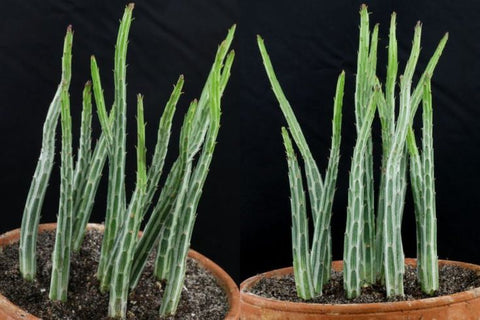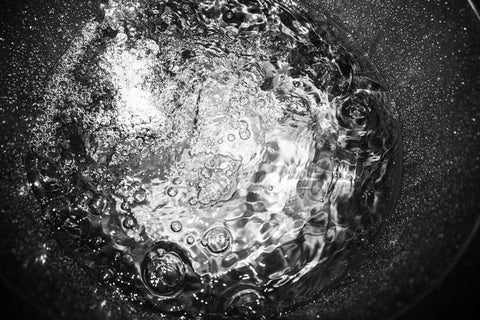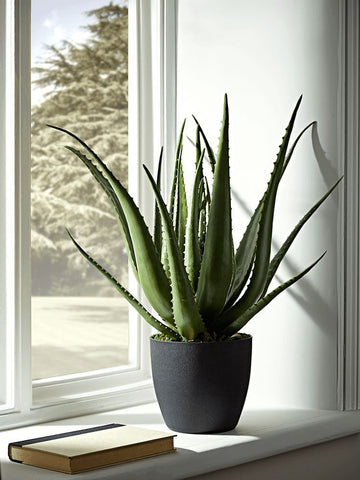Kleinia stapeliiformis, commonly known as the Pickle Plant or Candle Stick Plant, is a rare and intriguing succulent characterized by its unique appearance. This plant features tiny scale-like leaves and pencil-like cylindrical stems, which are brittle yet succulent in texture, with soft spines along the sides. It typically grows up to 10 inches in length and 0.8 inches in thickness. Interestingly, white offsets, or "babies," emerge from the stem underground and develop their distinct dark green and silver coloration when exposed to sunlight. Its distinctive green-and-white pattern closely resembles a cucumber. The stems of the plant are slender and branching, forming a compact, bushy growth habit.

One of the most striking features of Kleinia stapeliiformis is its large red or deep orange flowers. These vibrant blooms add a burst of color to the plant's green foliage, further enhancing its ornamental value. With its intriguing appearance and seasonal flowers, Kleinia stapeliiformis is sure to capture the attention of succulent enthusiasts and gardeners alike. However, flowering is relatively rare indoors and may require specific environmental conditions to occur.
Kleinia stapeliiformis is generally considered to be an easy-to-care-for. It requires minimal care and attention once established. It is drought-tolerant and can withstand periods of neglect, making it ideal for busy or novice gardeners. Kleinia stapeliiformis can thrive in a variety of climates, including arid and semi-arid regions. It is tolerant of high temperatures and can withstand dry conditions, making it well-suited for sucuclent gardens in warm climates.
Toxicity
Kleinia stapeliiformis is not considered toxic to humans. However, as with many succulent plants, there can be some allergic reactions, so it is always a good idea to exercise caution when handling them. While Kleinia stapeliiformis is generally safe, ingestion of any plant material may cause mild gastrointestinal discomfort, so it's best to keep it out of reach of pets and children. If you suspect that someone has ingested any part of the plant and is experiencing uncomfortable symptoms, seek medical attention immediately. Taking precautions is important to ensure the safety of both humans and pets is crucial when introducing plants into a living environment.
General Care
Lighting
Kleinia stapeliiformis thrives in bright, indirect light conditions. Place it near a sunny window where it can receive plenty of natural light throughout the day, but avoid placing it in direct sunlight, especially during the hottest part of the day. Direct sunlight can cause the leaves to become scorched or sunburned, leading to damage.
When grown indoors as a houseplant, choose a location that receives bright, indirect sunlight for most of the day. South- or west-facing windows are typically the best spots, as they tend to provide the brightest light. If natural light is limited, you can supplement with artificial grow lights to ensure adequate illumination. If growing Kleinia stapeliiformis outdoors, select a location that offers partial shade or filtered sunlight. Avoid placing it in full sun, especially in hot climates, as excessive sun exposure can cause heat stress and damage the plant. Providing some protection from intense afternoon sun can help prevent leaf scorching.
While Kleinia stapeliiformis does not like low light. Prolonged exposure to low light levels may result in leggy growth and reduced vigor. If you notice that the plant is not thriving in its current location, try moving it to a brighter spot with more indirect sunlight.
Watering
Like many succulents, Kleinia stapeliiformis prefers soil that dries out between waterings. Before watering, check the soil's moisture level by inserting your finger into the soil up to the first knuckle. If the soil feels dry to the touch, it's time to water. If it still feels moist, wait a few more days before watering. When it's time to water, thoroughly soak the soil until water drains out of the bottom of the pot. This ensures that the roots receive adequate moisture and helps flush out any accumulated salts or mineral deposits from the soil. Allow excess water to drain away completely to prevent waterlogged conditions, which can lead to root rot.
One of the most common mistakes in caring for succulents like Kleinia stapeliiformis is overwatering. Succulents are adapted to arid environments and can store water in their leaves and stems, so they are more tolerant of drought than excess moisture. Overwatering can lead to root rot and other problems, so it's essential to water sparingly and allow the soil to dry out between waterings. The frequency of watering will vary depending on factors such as the season, temperature, humidity, and growing conditions. During the warmer months or when the plant is actively growing, you may need to water more frequently. In contrast, during the winter or dormancy period, you can reduce the frequency of watering to prevent overwatering.

Soil And Fertilizer
Use a well-draining soil mix specifically formulated for cacti and succulents. These mixes typically contain ingredients such as perlite, coarse sand, and peat moss to ensure excellent drainage and aeration. Avoid heavy, moisture-retentive soils, as they can lead to root rot and other moisture-related issues. If you prefer to make your own potting mix, combine equal parts of commercial cactus or succulent soil mix with perlite or coarse sand. This mixture provides the ideal balance of water retention and drainage for Kleinia stapeliiformis.
Kleinia stapeliiformis does not require frequent fertilization, but occasional feeding can promote healthy growth and vibrant foliage. Use a balanced, water-soluble fertilizer formulated for cacti and succulents, diluted to half or quarter strength. Apply the fertilizer during the plant's active growing season, typically in spring and summer, following the manufacturer's instructions for application frequency and dosage.
Apply the diluted fertilizer solution to the soil around the base of the plant, taking care to avoid getting any on the foliage or stems. Water the plant thoroughly after fertilizing to distribute the nutrients evenly throughout the soil. Be cautious not to overfertilize Kleinia stapeliiformis, as excess nutrients can build up in the soil and cause fertilizer burn or other problems. Always err on the side of caution and use fertilizers sparingly, following recommended guidelines for application frequency and dosage.

Temperature And Humidity
Kleinia stapeliiformis prefers warm temperatures and is well-suited to USDA hardiness zones 9b through 11, where temperatures do not typically drop below 25°F. Ideally, keep temperatures above 50°F to prevent cold stress and damage to the plant. In cooler climates, it's best to grow Kleinia stapeliiformis as a potted plant indoors or in a greenhouse to provide protection from frost and cold temperatures.
During the summer months, Kleinia stapeliiformis can tolerate temperatures up to 90°F, as long as it receives adequate airflow and protection from intense midday sun. In hot climates, provide partial shade or filtered sunlight to prevent heat stress and sunburn on the leaves.

Kleinia stapeliiformis prefers low humidity levels and is well-suited to arid or semi-arid climates. It can tolerate occasional increases in humidity, but prolonged exposure to high humidity may increase the risk of fungal diseases or rot. Provide good air circulation around the plant to help prevent moisture buildup and maintain optimal growing conditions. When grown indoors as a houseplant, Kleinia stapeliiformis typically thrives in the low to moderate humidity levels (30-50%) found in most indoor environments. Avoid placing it near sources of high humidity, such as bathrooms or kitchens, and provide adequate ventilation to promote airflow around the plant.
Extra Care
Potting
Choose a pot with drainage holes at the bottom to allow excess water to escape freely. A pot that is slightly larger than the plant's current root ball is ideal, providing room for growth without overwhelming the plant. It is recommended that you pick a pot made from a porous material to optimize drainage and airflow, such as cement, terra cotta, or ceramic.
Repot Kleinia stapeliiformis when it outgrows its current pot or becomes root-bound, typically every 2-3 years. Signs that your plant may need repotting include roots protruding from the drainage holes, the plant becoming top-heavy, or reduced growth and vigor. Choose a new pot that is one size larger than the current pot, ensuring there is enough room for the plant to grow. Carefully remove the plant from its pot and gently shake off excess soil to expose the roots. If the roots are tightly bound, you may need to gently tease them apart or trim any circling roots to encourage healthy growth.

Pruning
Kleinia stapeliiformis does not need regular pruning, as it has a naturally compact and attractive growth habit. However, occasional pruning may be required to maintain the plant's shape, remove dead or damaged stems, or propagate new plants. Inspect the plant regularly for any dead, dried, or damaged stems. Using clean, sharp pruning shears, carefully snip off these stems at their base, making clean cuts to promote healing and prevent disease spread. When Kleinia stapeliiformis becomes leggy or overgrown, you can also prune it back to maintain a more compact and attractive appearance. The best time to prune Kleinia stapeliiformis is in the spring or early summer when the plant is actively growing. Avoid pruning during the dormant winter months, as the plant may be less resilient to stress and may not recover as quickly. Always use clean and sharp pruning tools when pruning Kleinia stapeliiformis to minimize the risk of introducing pathogens or causing unnecessary damage to the plant. Disinfect the pruning shears with rubbing alcohol or a diluted bleach solution before and after use.

Propagation
Propagating Kleinia stapeliiformis can be done through stem cuttings.
First, choose a healthy stem to use as a cutting. Look for a stem that is firm and plump, with no signs of damage or disease. It's best to take cuttings in the spring or early summer when the plant is actively growing. Use clean, sharp pruning shears to make a clean cut just below a leaf node on the chosen stem. The cutting should be a few inches long, with at least one leaf node intact. Remove any lower leaves from the cutting to expose the node.
Next, place the cutting in a warm, dry location out of direct sunlight and allow the cut end to callus over for a few days. This helps prevent rotting when the cutting is planted.
After the cut end has callused over, plant the cutting in a small pot filled with well-draining soil. Insert the cut end of the cutting into the soil, burying it just deep enough to provide stability. Gently press the soil around the base of the cutting to hold it in place. Place the potted cutting in a location with bright, indirect light and water lightly. Keep the soil consistently moist but not waterlogged, as excessive moisture can cause the cutting to rot. Roots should begin to develop within a few weeks to a couple of months.
Once the cutting has developed a healthy root system, it can be transplanted into a larger pot or planted outdoors in a suitable location. Follow the same care and watering routine as you would for a mature Kleinia stapeliiformis plant.

Blooming
Kleinia stapeliiformis typically blooms in the summer months, from late spring to early autumn. However, the exact timing of flowering may vary depending on factors such as environmental conditions, age of the plant, and overall health. Flowering in Kleinia stapeliiformis is often triggered by environmental factors such as changes in temperature, light, and water availability. Providing optimal growing conditions, including bright light, warm temperatures, and occasional watering, can encourage the plant to produce blooms. The blooms of Kleinia stapeliiformis typically last for a few weeks to a month, depending on the individual plant and environmental factors. Deadheading spent flowers can encourage the plant to produce more blooms and prolong the flowering period.
Common Problems
Kleinia stapeliiformis Pickle Plant is generally a low-maintenance succulent. However, like all plants, it can be susceptible to certain problems. Here are some common issues you may encounter when caring for Kleinia stapeliiformis:
-
Overwatering: One of the most common problems with succulents, including Kleinia stapeliiformis, is overwatering. Too much moisture can lead to root rot and other fungal diseases. Always allow the soil to dry out between waterings and avoid waterlogging the plant.
-
Underwatering: On the flip side, underwatering can also be a problem, particularly if the plant is left without water for extended periods. While Kleinia stapeliiformis is drought-tolerant, it still requires occasional watering, especially during the growing season. Signs of underwatering include shriveled or wilting leaves.
-
Pests: While Kleinia stapeliiformis is relatively resistant to pests, it can occasionally attract common succulent pests such as mealybugs, aphids, and spider mites. Inspect your plant regularly for signs of pest infestation, such as webbing, sticky residue, or visible insects, and treat the problem promptly with insecticidal soap or neem oil.
- Sunburn: Excessive exposure to direct sunlight, particularly during the hottest part of the day, can cause sunburn on the leaves of Kleinia stapeliiformis. Signs of sunburn include brown or yellow spots on the leaves. To prevent sunburn, place the plant in a location with bright, indirect light, especially during the afternoon.
- Root Rot: Root rot can occur if the plant is kept in soil that is too moist or if it is watered too frequently. To prevent root rot, use a well-draining potting mix and allow the soil to dry out between waterings. If root rot is suspected, remove the affected parts of the plant and repot it in fresh soil.
- Fungal Diseases: Fungal diseases such as powdery mildew or leaf spot can occur in Kleinia stapeliiformis, particularly in humid conditions or if the plant is overwatered. Improve air circulation around the plant, avoid overhead watering, and treat fungal infections with fungicidal treatments as needed.
































































































